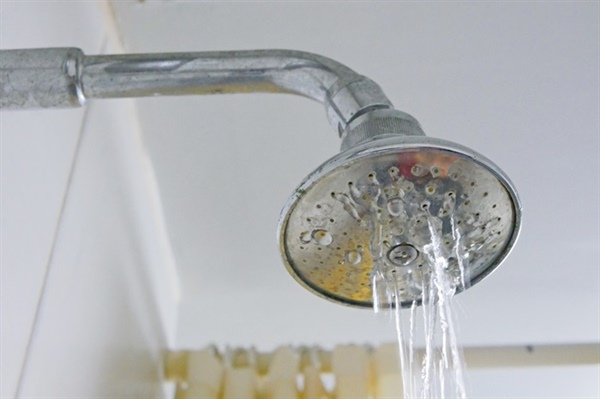Common Causes of Low Water Pressure

Low water pressure can be frustrating in your home, impacting everything from the effectiveness of your shower to the function of your appliances.
While some issues are easy to fix, others might need professional intervention to restore proper water flow. This guide highlights five common causes of low water pressure, from internal plumbing concerns to external factors beyond your control.
If you have low water pressure, the experts at Tiger Plumbing, Heating, & Air are here to help explain why. Let’s take a closer look!
Clogged Pipes: How Mineral Buildup Can Restrict Water Flow
One of the most common causes of low water pressure is clogged pipes, particularly in homes with hard water. Hard water contains high concentrations of minerals like calcium and magnesium, which can gradually accumulate inside your pipes.
Over time, this buildup reduces the effective diameter of your pipes, restricting water flow and causing pressure to drop.
Mineral buildup can occur in any part of your plumbing system, but it’s most likely to affect areas with frequent water flow, such as kitchen and bathroom pipes. If you notice a gradual decrease in water pressure over time, mineral deposits could be the culprit.
Flushing your pipes or using water softeners can help reduce buildup, but severe clogs may require professional cleaning or pipe replacement.
To prevent further buildup, consider installing a whole-house water softening system. These systems reduce the concentration of minerals in your water, helping to protect your pipes from clogs and maintain consistent water pressure.
Leaks in Your Plumbing System: Finding and Fixing Hidden Culprits
Another common reason for low water pressure is a leak somewhere in your plumbing system. Even a small leak can divert water from its intended path, reducing the pressure in your pipes.
Leaks often occur in hard-to-see areas, such as behind walls, beneath floors, or underground, making them difficult to detect without the proper tools.
Signs of a hidden leak include unexplained wet spots, water damage, or a sudden increase in your water bill. A simple test is to turn off all water in your home and check the water meter. If the meter continues to move, it’s likely that you have a leak.
Fixing leaks promptly can restore your water pressure and prevent more serious damage to your home’s structure.
If you suspect a leak but can’t find the source, it’s best to call a plumber who can use specialized equipment, such as infrared cameras or acoustic listening devices, to pinpoint the exact location.
Malfunctioning Pressure Regulator: When Your Control Valve Needs Attention
Your home’s pressure regulator controls the water pressure from the municipal supply to your house. If your pressure regulator malfunctions, it can cause your water pressure to fluctuate or drop below the desired level.
This device, typically located near the main water line, ensures that your home’s plumbing isn’t overwhelmed by excessively high water pressure.
A faulty pressure regulator can result in inconsistent water pressure throughout your home. If you notice that your pressure is too low or varies frequently, it might be time to check the regulator. Homeowners can test the water pressure using a gauge attached to an outdoor spigot.
A pressure regulator adjustment or replacement may be necessary if the pressure reading is significantly lower than normal.
Fixing a malfunctioning pressure regulator can often require professional help, as improper adjustments can lead to more significant problems later on.
Municipal Water Supply Issues: Understanding External Factors Affecting Pressure
Sometimes, the cause of low water pressure isn’t within your home’s plumbing system at all. Municipal water supply issues can lead to a sudden drop in pressure across multiple homes in your area. These issues might result from maintenance work, a broken water main, or periods of high demand on the system.
If your neighbors are experiencing similar water pressure problems, it’s a good indication that the issue lies with the municipal supply. You can contact your local water provider for updates on any ongoing issues or planned maintenance that might affect your area's pressure.
In these cases, you can do little to resolve the problem yourself. However, staying informed and reporting any prolonged issues to your water supplier can help address the problem as quickly as possible.
Corroded Plumbing: How Aging Pipes Impact Water Pressure
As homes age, so do their plumbing systems. Corroded pipes frequently cause low water pressure, especially in older properties. Over time, pipes made of materials like galvanized steel can rust and corrode, narrowing the interior diameter and reducing water flow.
The effects of corroded plumbing are usually gradual, with homeowners noticing a slow decrease in water pressure over the years. Corrosion can also lead to discolored water, leaks, and other issues. If your home has older plumbing, it’s important to have regular inspections to assess the condition of your pipes.
In many cases, replacing corroded sections of pipe or upgrading to newer materials like copper or PEX can restore water pressure and improve the overall efficiency of your plumbing system.
Dealing with Low Water Pressure? The Tiger Team Can Help!
Whether the issue is due to clogged pipes, hidden leaks, a malfunctioning pressure regulator, external factors like municipal water supply problems, or corroded plumbing, identifying the root cause is the first step toward a solution.
At Tiger Plumbing, Heating, & Air, we have diagnosed and resolved low water pressure issues for Twin Cities residents and business owners since 2001.
From pipe repair and replacement to leak detection and heating and cooling issues, our experienced team is ready to pounce into action.
Contact us today to learn more about our services or to schedule an inspection.